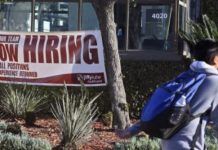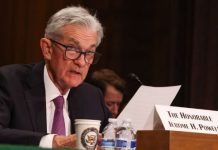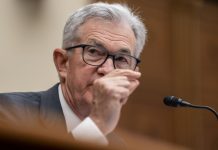
NEW YORK, Aug. 17 (UPI) — The Federal Reserve’s decision three weeks ago to leave benchmark interest rates alone for the time being had a ripple effect that sparked a mini rally on Wall Street Wednesday.
The U.S. central bank released its minutes report Wednesday for the July 27 meeting, at which the Federal Open Market Committee decided that domestic economic signals — particularly inflation, a key indicator — didn’t appear to warrant a rate hike.
“Inflation has continued to run below the Committee’s 2 percent longer-run objective,” the Board of Governors for the Federal Reserve System said in the minutes.
“Against this backdrop, the Committee decided to maintain the target range for the federal funds rate at 1/4 to 1/2 percent.”
The Fed has yet to raise key interest rates in 2016, despite expectations stated by the FOMC months ago that hikes were likely coming. A number of factors, though, have interfered with those forecasts — including varying U.S. labor statistics and Britain’s surprise exit from the European Union in June.
“The Committee will assess realized and expected economic conditions relative to its objectives of maximum employment and 2 percent inflation,” the Fed stated. “The federal funds rate is likely to remain, for some time, below levels that are expected to prevail in the longer run.”
An inflation rate of 2 percent typically suggests a healthy economy, but that figure has remained under the threshold in the United States so far this year.
The committee hasn’t raised the federal funds rate since December, when it climbed from near zero to its current target range of 1/4 to 1/2 percent. That rate hike was the Fed’s first this decade.
In its minutes, the Federal Reserve again said that at least one increase will likely occur before the end of the year — perhaps as early as the panel’s next meetings Sept. 20-21.
Nine of the FOMC’s 10 menbers, including chair Janet Yellen, voted to leave rates alone. Just one, Kansas City Federal Reserve Bank chief Esther L. George, favored pushing the rate’s target range to between 1/2 and 3/4 percent.
George, who believes the central bank may be stifling economic growth by keeping rates low, has cast several dissenting votes against her FOMC colleagues. Since she began voting on monetary policy as Kansas City Fed president in 2011, she has voted with the majority on just two occasions.
“For me it is really beginning to move slowly and on a path that allows this economy to adjust and put rates closer to where the economy is performing,” she told The New York Times in April. “This is not a time to try to cool an overheated economy.”
U.S. indices climbed slightly as the Fed’s minutes spurred a small spike Wednesday.
The Dow Jones Industrial Average erased modest losses earlier and climbed 22 points to close at 15,574. The S&P 500 jumped 4 points to 2,182 and the Nasdaq composite improved two points to 5,228.
The U.S. dollar, though, weakened slightly (less than 0.1 percent) immediately after the minutes’ release, erasing a gain earlier in the day of about 0.3 percent. The value of the dollar fell sharply on Tuesday.





